#FineArtsLibrary
Text
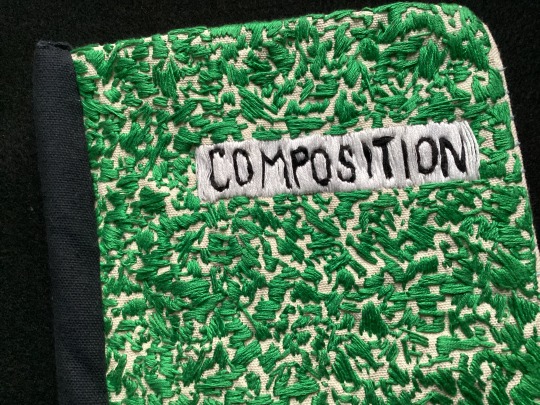


February is also National Embroidery Month, and we’re excited to show you some cool items we have in the Special Collections. The first one is a hand-embroidered canvas book made by Candace Hicks who collects coincidences from the books she reads and gathers them in her artists’ books and installations.
Hicks created a variant series of hand-embroidered books, copying the form and design of dime-store "composition" books. In this volume, Hicks kept a record of coincidences in the books she was reading and noted every time the word “coincidence” occurred.
Common threads : Volume 28
Hicks, Candace
[Austin, Tex. : C. Hicks,] 2011.
English
HOLLIS number: 990128839780203941
#NationalEmbroideryMonth#Embroidery#ArtistsBooks#CandaceHicks#HarvardFineArtsLibrary#Fineartslibrary#Harvard#HarvardLibrary
2K notes
·
View notes
Photo

The Fine Arts Library (@utlibraries) contains over 200 artists’ books, exemplifying different binding techniques, materials, sculptural forms and conceptual approaches, with the FAL holding titles by such recognizable artists as Damien Hirst, Richard Prince and Ed Ruscha. Some of the books in the collection push the boundaries of reading by engaging with other senses such as smell, touch and taste.
The Experiencing Artists’ Books event will present attendees an opportunity to smell, touch, taste and hear some of these unique volumes. This event is associated programming for the new Visual Arts Center (VAC) exhibition Fool’s Romance / Books from Aeromoto curated by Allison Myers, Art History PhD candidate and 2016-2017 VAC Curatorial Fellow. Myers will lead a dialogue between local artists and bookmakers including Jason Urban, Artist and Studio Art Faculty, Lindsay Starr, Cattywampus Press, and Claudia Zapata of the Puro Chingón Collective. After our dialogue, audience members will have the opportunity to engage with the unusual books in our collection.
Tuesday, November 7, 5:30-7:30 p.m.
Fine Arts Library
http://www.lib.utexas.edu/calendar/experiencing-artists-books
#chingozine#purochingoncollective#ut#utaustin#universityoftexasataustin#universityoftexas#utlibraries#artbooks#zines#zine#fineartslibrary
0 notes
Text

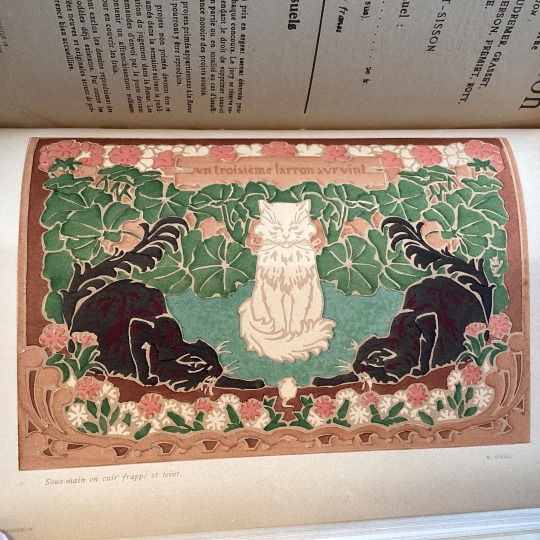
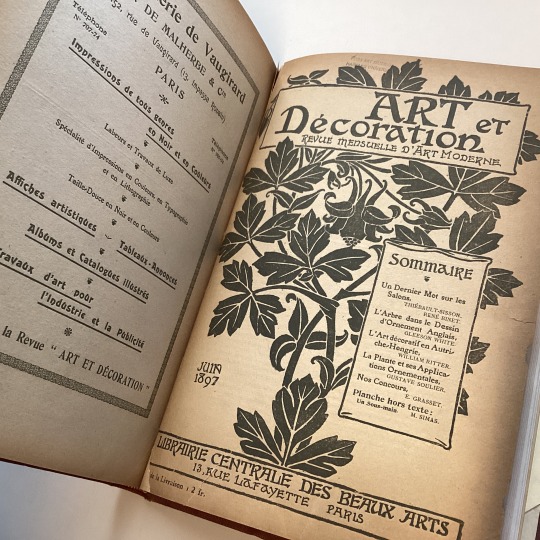
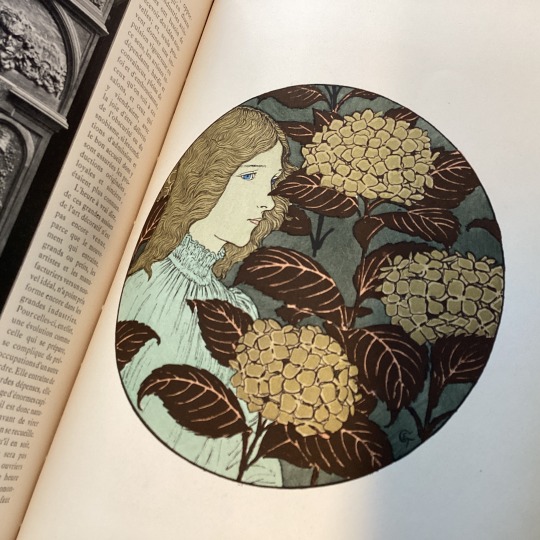
April is National Decoration Month.
Art et décoration was first published in 1897. The publication was suspended during the two World Wars from August 1914 – April 1919, and from 1939 through 1945. The Fine Arts Library has the original volumes if you want to see them. Request to view them in the Special Collections Study Room!
Art et décoration : revue mensuelle d'art moderne
Cover title: Art et décoration et l'architecture 1936-37
Paris : Librairie Centrale des Beaux Arts,
Frequency note: Monthly
French
HOLLIS number: 990062486850203941
#NationalDecorationMonth#Decoration#ArtEtDecoration#SpecialCollections#HarvardFineArtsLibrary#Fineartslibrary#Harvard#HarvardLibrary
241 notes
·
View notes
Text

Today is National Sewing Machine Day! This photograph shows a Singer sewing machine salesman demonstrating how the machine works. The Singer treadle sewing machine had a cast iron base and treadle. The machine also folded down into a cabinet.
Stephen Dingilian (left), a Singer sewing machine salesman. Sirvi-HIssar.
photographs
c. 1899
Armenian
Repository: Project SAVE Armenian Photograph Archives, Watertown, Middlesex, Massachusetts, United States
HOLLIS number: 8000903763
This image is part of FAL’s Digital Images and Slides Collection (DISC), a collection of images digitized from secondary sources for use in teaching and learning. FAL does not own the original artworks represented in this collection, but you can find more information at HOLLIS Images (link in bio).
#NationalSewingmachineday#Sewingmachine#photography#vintagephotography#Singersewingmachine#HarvardFineArtsLibrary#Fineartslibrary#Harvard#HarvardLibrary#digitalimages#harvard library#harvardfineartslib
529 notes
·
View notes
Text

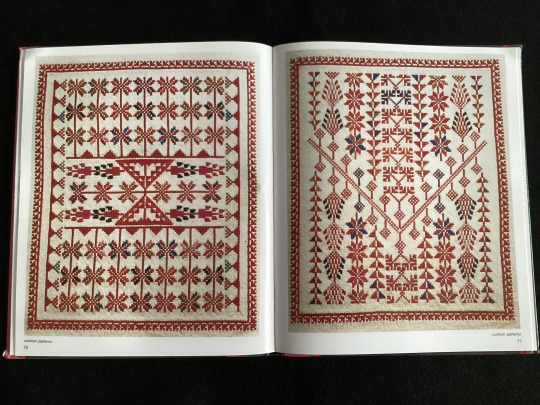

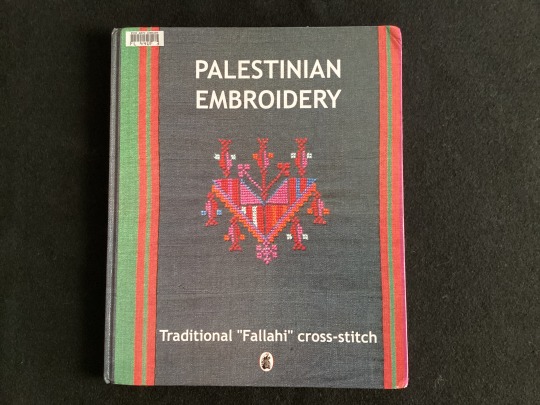
The art of embroidery in Palestine, practices, skills, knowledge, and rituals was inscribed into UNESCO’s Intergovernmental Committee for the Safeguarding of the Intangible Cultural Heritage in 2021.
According to the Nomination file No. 01722 for inscription in 2021 on the Representative List of the Intangible Cultural Heritage of Humanity, it was described as:
“The art of embroidery is widespread in all cities, villages, and camps of Palestine, and is rooted there since the Canaanite era. The Palestinian embroidery was affected by the multiplicity of places in which it originated or moved to and due to the inter-cultural process after the exodus of the Palestinians in 1948, but the style and method of embroidery remained the same. Palestinian women carried their embroidery art with them to their places of refuge in all parts of the world as a symbol of national identity and pride. In view of the development in the means of communication and outreach, embroidery has become widespread and influential in neighbouring countries, as it has taken modern patterns while retaining the known traditional form that is distinguished from the rest of the forms of embroidery in the world as it carries the story of Palestinian women and summarizes their style and their relationship to land and life.”
February is National Embroidery Month. We want to highlight this beautiful heritage of embroidery in Palestine, amid destruction of cultural and historical heritage sites in Gaza. According to an article on the Guardian on February 4th, more than 200 buildings of cultural or historical significance have been destroyed in Gaza.
Palestinian cross-stitch embroidery, “fallahi” comes from the word “fallaha” which means farm woman, because it was embroidered mostly by village women.
Palestinian embroidery : traditional "Fallahi" cross-stitch
Kawar, Widad and Nasir, Tania Tamari
2nd edition.
Beirut : Al-Mo'assasa al-Aarabiyyah Lidirasat wa al-Nashr, 2003.
English
HOLLIS number: 990093496510203941
#PalestinianEmbroidery#Embroidery#PalestinianCraft#PalestinianArt#NationalEmbroideryMonth#fallahi#الغرزة الصليبية#SafeguardingCulturalHeritage#HarvardFineArtsLibrary#Fineartslibrary#Harvard#HarvardLibrary
113 notes
·
View notes
Text

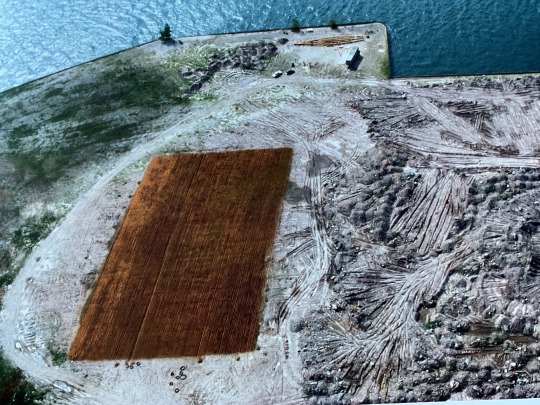
A Hungarian-born American artist, Agnes Denes (b. 1931) is a pioneer in environmental, ecological, and conceptual art. Her family survived the Nazi occupation in WWII and migrated to Sweden before settling in the United States.
In 1982, Denes planted a 2-acre wheatfield on a landfill in Manhattan two blocks away from the Wall Street and the World Trade Center. Against the backdrop of Wall Street, this golden wheatfield stood for four months and mesmerized many New Yorkers. Denes said in regard to this work, “… the work had to have a meaning, a strong message, and, of course, the paradox. … the work turned out to be one block from Wall Street, facing the Statue of Liberty, for which this country stands, in the middle of traffic in a bustling city. A large golden field of grain on land meant for the rich, on expensive real estate.” (From an interview with Ulrich Obrist)
Today, more than forty years after she created this monumental work entitled “Wheatfield – A Confrontation: Battery Park Landfill, Downtown Manhattan,” her vision touches even more deeply given the ever-increasing degradation of our environment, the ongoing mismanagement of land and food systems, and the widening divide between the poor and the wealthy—all the result of corporate capitalism, as well as geopolitical control of resources.
Denes said that this work represented “food, energy, commerce, world trade, economics” and referred to “mismanagement, waste, world hunger.” She also said, “My decision to plant a wheatfield in Manhattan, instead of designing just another public sculpture, grew out of the longstanding concern and need to call attention to our misplaced priorities and deteriorating human values.”
At the age of 88, Denes finally had her retrospective at the Shed in New York in 2019. This publication presents more than 130 works from the exhibition, spanning the artist’s entire 50-year career.
Agnes Denes : absolutes and intermediates
New York, NY : The Shed, [2019]
English
Catalog of an exhibition held at The Shed, October 9, 2019-January 19, 2020.
HOLLIS number: 99153868498803941
#AgnesDenes#WomensHistoryMonth#EnvirontalArt#EcologicalArt#Wheatfield#WomenArtist#HarvardFineArtsLibrary#Fineartslibrary#Harvard#HarvardLibrary
107 notes
·
View notes
Text
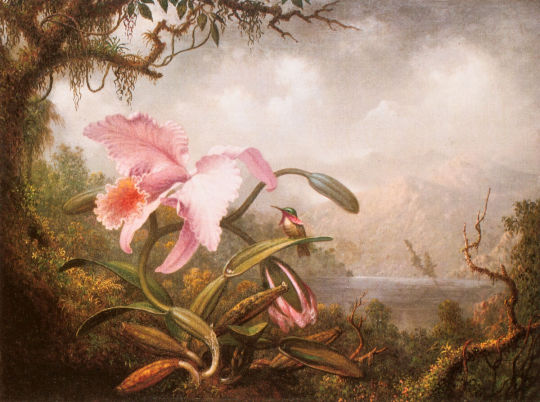
Happy National Orchid Day!
Orchid and hummingbird
Heade, Martin Johnson, 1819-1904, American
ca.1885
Oil on canvas
15 x 20 1/8"
Repository: Fine Arts Museums of San Francisco, San Francisco, San Francisco, California, United States
HOLLIS Number: olvwork199203
This image is part of FAL’s Digital Images and Slides Collection (DISC), a collection of images digitized from secondary sources for use in teaching and learning. FAL does not own the original artworks represented in this collection, but you can find more information at HOLLIS Images.
#NationalOrchidDay#Orchid#Painting#HarvardFineArtsLibrary#FineArtsLibrary#Harvard#HarvardLibrary#DigitalImages
59 notes
·
View notes
Text
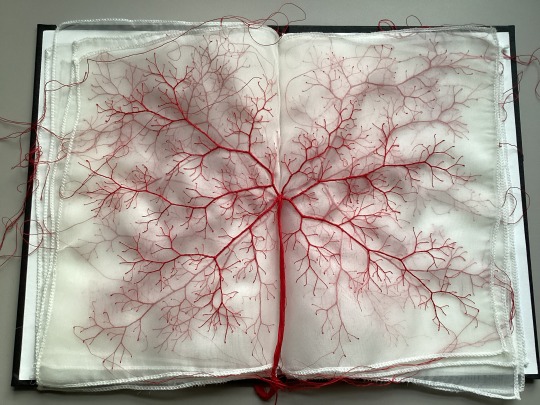
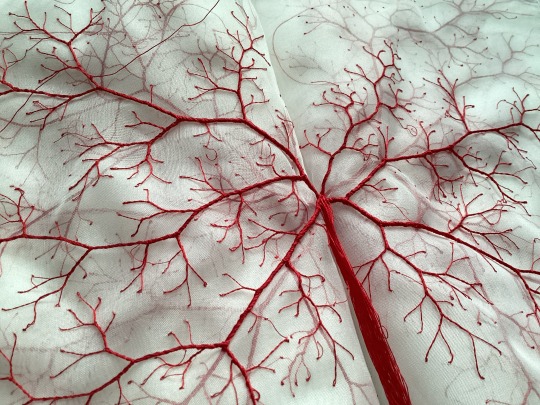

"I went back to my favorite shape of thread structure radiating from the middle. The energy, or emotion gets concentrated into the middle forming a stream of red thread. To me, it is a shape of maternal love, or representation of life in nature. If you see a tree from top, this is how the branches look like. If we could see a tree root from the very bottom, it is the same. So as a structure of a female organs such as breasts and placenta." -- Rima Day on Scriptum XXII
Rima Day uses thread, fabric, and paper to create artwork that is inspired by nature and the human body. Day studied fashion design both in her native city of Tokyo, Japan and later in New York City and worked as a freelance custom ballet costumer in New York City and Connecticut. Her skills as a fashion designer are evident in her beautifully hand-stitched artist’s book. This is our third post in honor of National Embroidery Month!
Scriptum XXII
Day, Rima [book artist]
Scriptum 22
[Thompson's Station, TN ] : [Rima Day], August 2021.
HOLLIS number: 99156839180203941
#RimaDay#ArtistsBook#NationalEmbroideryMonth#StitchedBook#ContemporaryEmbroidery#StitchedArt#HarvardFineArtsLibrary#Fineartslibrary#Harvard#HarvardLibrary
56 notes
·
View notes
Text
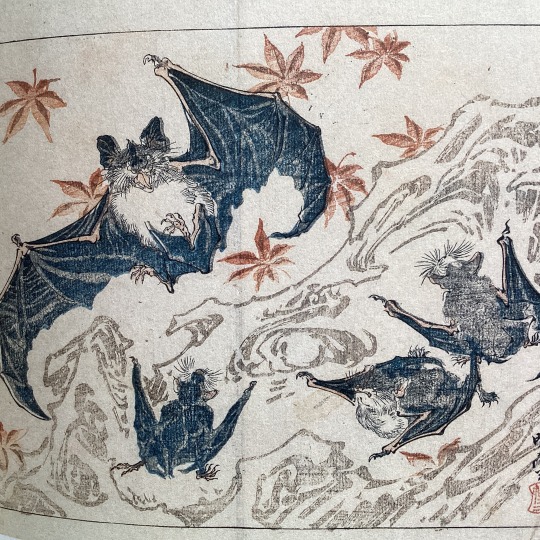
Happy International Bat Appreciation Day!
Did you know that bats are the only mammals capable of true and sustained flight? Their hand-like wings are formed from four elongated “fingers” covered by a cutaneous membrane. Pretty amazing!
Image:
Bat with Young, 1881.
Kyōsai Kawanabe (1831 – 1889)
Plate from the illustrated book Kyōsai rankuga (Kyōsai’s Drawings for Pleasure)
Kyōsai's animal circus : from the Israel Goldman Collection
Sadamura, Koto, 1982- [author]
London : Royal Academy of Arts, 2022.
English
河鍋暁斎, -- 1831-1889 -- Exhibitions.
Kawanabe, Kyōsai, 1831-1889 -- Exhibitions
HOLLIS number: 99156378937403941
#Japaneseartist#KyosaiKawanabe#河鍋暁斎#Woodblockprint#animalsinart#Kyosai#bat#Internationalbatappreciationday#HarvardFineArtsLibrary#Fineartslibrary#Harvard#HarvardLibrary#harvardfineartslibrary#fineartslibrary#harvard#harvard library#harvardfineartslib#harvardlibrary
308 notes
·
View notes
Text
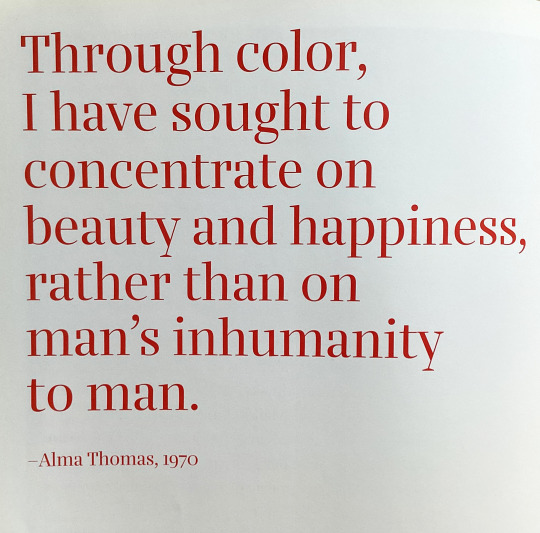

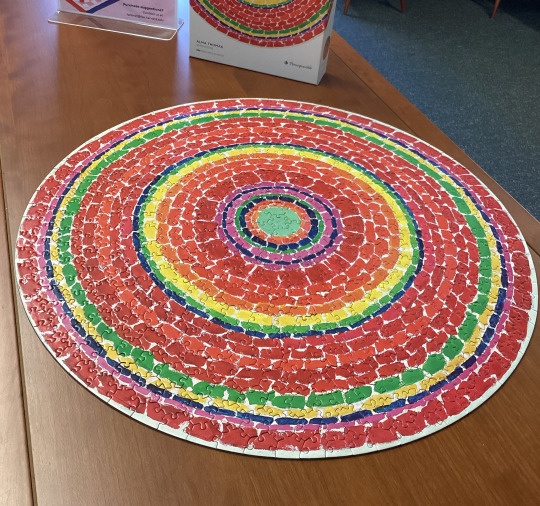
Now recognized as a major American painter of the 20th century, Alma Thomas (1891-1978) is best known for her colorful abstract paintings. Thomas believed in creating beautiful work. She said:
“I’ve never bothered painting the ugly things in life. People struggling, having difficulty. You meet that when you go out, and then you have to come back and see the same thing hanging on the wall. No. I wanted something beautiful that you could sit down and look at. And then, the paintings change you.” –– Alma Thomas, ca. 1977–78
Besides many books on the artist, the Fine Arts Library also has an Alma Thomas puzzle! When you get tired of studying, or just feeling tired of seeing too many ugly things in the world, come to the library, and let your mind go by looking at this colorful puzzle. You can also borrow it and take it home with you!
Image 1: “Through color, I have sought to concentrate on beauty and happiness, rather than on man’s inhumanity to man.” –– Alma Thomas, 1970
Image 2: Color photograph of Alma Thomas in the studio
Image 3: Completed Alma Thomas puzzle at the Fine Arts Library
Alma Thomas
New York, New York : The Studio Museum in Harlem ; Saratoga Springs, New York : The Frances Young Tang Teaching Museum and Art Gallery at Skidmore College ; Munich : DelMonico Books/Prestel, 2016.
HOLLIS number: 990148627750203941
Alma Thomas in Her Studio
Color photography
Columbus Museum, Columbus (Muscogee, Georgia, United States) (inhabited place)
HOLLIS number: 8001685875
The second image is part of FAL’s Digital Images and Slides Collection (DISC), a collection of images digitized from secondary sources for use in teaching and learning. FAL does not own the original artworks represented in this collection, but you can find more information at HOLLIS Images.
#AlmaThomas#Photography#Painting#AbstractPainting#Beauty#Puzzle#ArtPuzzle#Portrait#Blackartist#Blackwomenartist#Blackhistorymonth#HarvardFineArtsLibrary#Fineartslibrary#Harvard#HarvardLibrary#Digitalimage
47 notes
·
View notes
Text

Rest in Power, Faith Ringgold.
Faith Ringgold died at 93 on Saturday at her home in Englewood, New Jersey.
Faith Ringgold was born in Harlem in New York City in 1930. She was best known for her storytelling quilt work. This was the time after the golden era of the Harlem Renaissance, but the neighborhood was still beaming with much excitement and creativity. Ringgold grew up as the third child in a working-class family, often sick with asthma, such that she spent a lot of time making drawings and imagining that “the bridge was the magic highway to the rest of the world.” Later Ringgold used the imagery of bridges in “The Woman on a Bridge Series.”
Ringgold was a trailblazing artist, educator, and activist. For seven decades, she used art as her platform to speak out against racism, sexism, and inequality. Through her storytelling and visual art, Ringgold challenged the status quo in the society.
Faith Ringgold : a view from the studio
Attribution: Curlee Raven Holton, with Faith Ringgold.
Holton, Curlee Raven.
Boston : Bunker Hill Pub. in association with Allentown Art Museum, 2004.
English
HOLLIS number: 990095910410203941
#FaithRinggold#AmericanBlackArtist#BlackWomenArtist#HarvardFineArtsLibrary#Fineartslibrary#Harvard#HarvardLibrary
28 notes
·
View notes
Text

It’s National Read a Book Day! We have books, of course, but the Fine Arts Library is a home to more than art books. We have photographs, artists’ books, facsimiles, digital content, and expert librarians. Come visit us!
Self-portrait (reading, with "L'Image de la femme" ("The Image of woman")
Cahun, Claude, 1894-1954, French [photographer]
Malherbe, Suzanne, French illustrator, 1892-1972 [photographer]
Black and white photography
110 x 82 mm.
Collaboration between Claude Cahun and Marcel Moore (pseudonym for Suzanne Malherbe.)
French
1915
Repository: Jersey Heritage Collections, Saint Hélier, Jersey island, Jersey
HOLLIS number: 8001614130
This image is part of FAL’s Digital Images and Slides Collection (DISC), a collection of images digitized from secondary sources for use in teaching and learning. FAL does not own the original artworks represented in this collection, but you can find more information at HOLLIS Images.
#NationalReadABookDay#ClaudeCahun#BlackAndWhitePhotography#SelfPortrait#HarvardFineArtsLibrary#FineArtsLibrary#Harvard#HarvardLibrary#DigitalImages
77 notes
·
View notes
Text
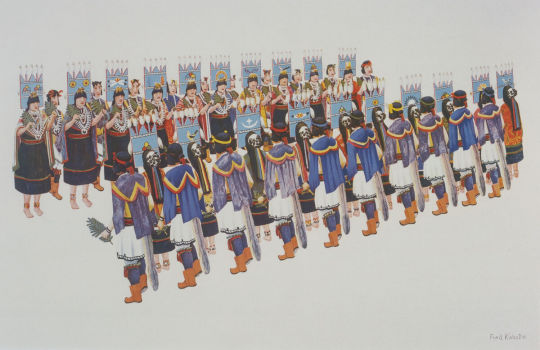
November is Native American Heritage Month. We recognize and honor indigenous cultures and worldviews that focus on living in harmony with nature as a part of a shared ecosystem. In this post, we bring you a watercolor painting entitled "Butterfly Dance" by Fred Kabotie (c. 1900–1986) who was a celebrated Hopi painter, silversmith, illustrator, potter, author, curator and educator.
The Hopi Butterfly Dance takes place in late summer to early fall in northern Arizona’s Hopi villages. It is a two-day ceremony for the harvest, calling for rain, good health, and long life for all living things. The dance is performed by young and unmarried girls, a ritual to learn what it means to be a young Hopi woman and her purpose within Hopi culture. On the day of the ceremony, the dancer wears a kopatsoki (headdress) and ceremonial clothing with her feet painted yellow, symbolizing the eagle’s yellow feet, so that she can dance lightly throughout the day. (You can learn more about Butterfly Dance in the essay written by Gloria Lomahaftewa on the National Museum of the American Indian’s website.)
Butterfly dance
Kabotie, Fred, Native American painter, 1900-1986 [artist]
Watercolor on paper
14 x 21 3/4"
Native American, Hopi
ca.1928
Repository: School for Advanced Research, Santa Fe, Santa Fe, New Mexico, United States
HOLLIS number: 8001696092
This image is part of FAL’s Digital Images and Slides Collection (DISC), a collection of images digitized from secondary sources for use in teaching and learning. FAL does not own the original artworks represented in this collection, but you can find more information at HOLLIS Images.
#NativeAmericanHeritageMonth#Hopi#ButterflyDance#HopiCulture#NativeAmericanArt#FredKabotie#HarvardFineArtsLibrary#FineArtsLibrary#Harvard#HarvardLibrary#DigitalImages
67 notes
·
View notes
Text
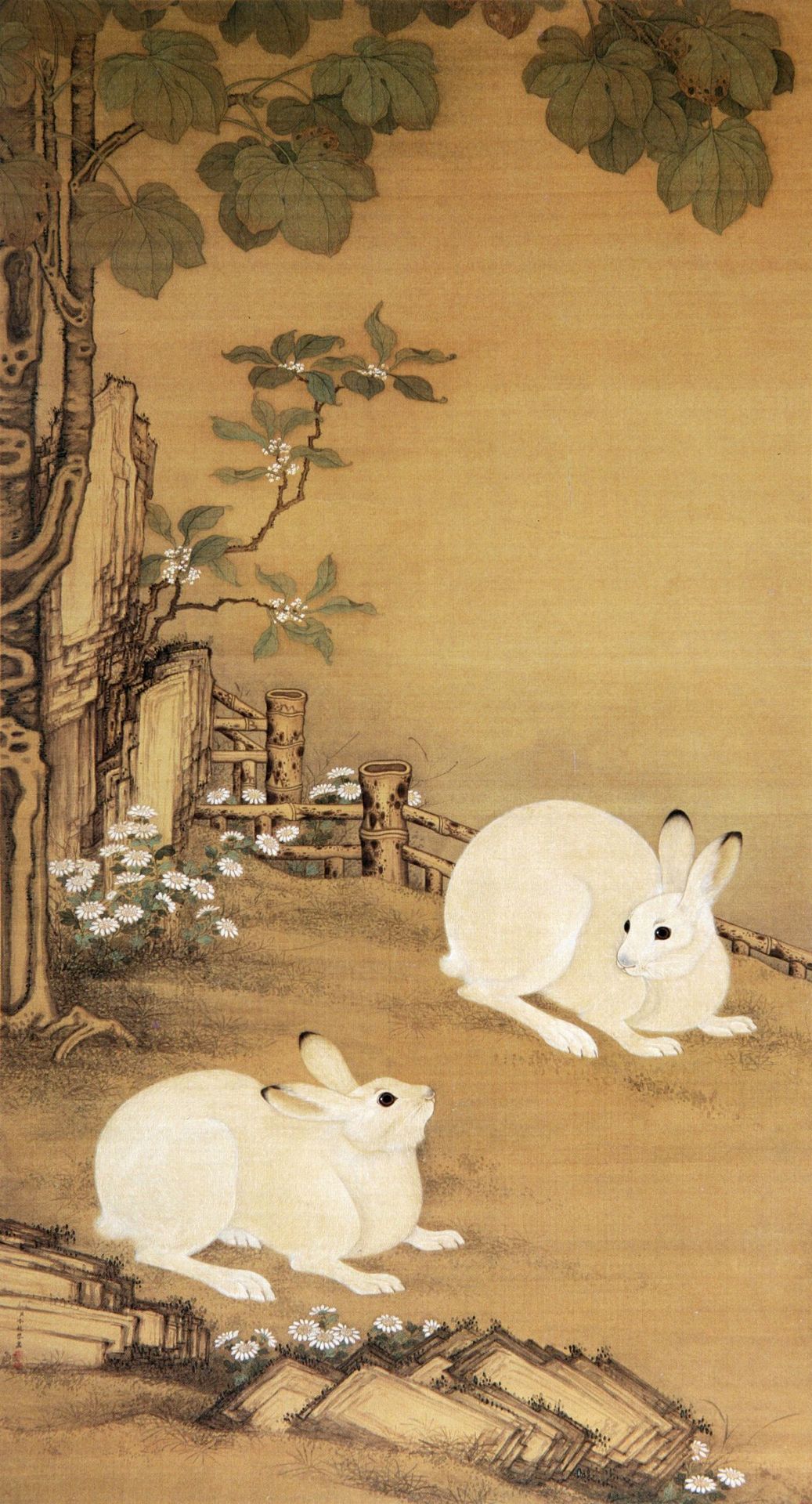
Happy Year of the Rabbit!
2023 is the Year of the Rabbit, an animal that symbolizes longevity, positivity, auspiciousness, wittiness, cautiousness, cleverness, and deftness. We wish you a peaceful and restful year ahead.
Parasol tree and two rabbits
Transliterated (Pinyin) Title: Wu tong shuang tu
Alternate Title: Rabbit pair beside paulownia tree
Leng Mei, 1st half of 18th cent., Chinese [artist]
Materials/Techniques: silk, color
176.2 x 95 cm.
Chinese
Style / period
Qing
18th century
Repository: Palace Museum, Beijing, Beijing Shi, China
HOLLIS number: olvwork380658
This image is part of FAL’s Digital Images and Slides Collection (DISC), a collection of images digitized from secondary sources for use in teaching and learning. FAL does not own the original artworks represented in this collection, but you can find more information at HOLLIS Images.
#新年快乐#Yearoftherabbit#Lunarnewyear#Lunarnewyear2023#Rabbityear#ChineseNewYear2023#HarvardFineArtsLibrary#Fineartslibrary#Harvard#HarvardLibrary#digitalimages#Asianart#harvardfineartslibrary#fineartslibrary#harvard#harvard library#harvardfineartslib#harvardlibrary#painting
295 notes
·
View notes
Text
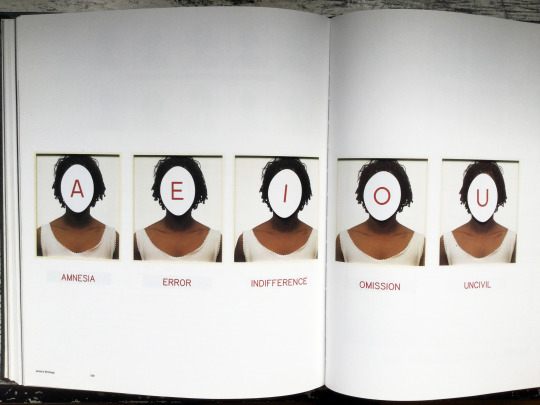

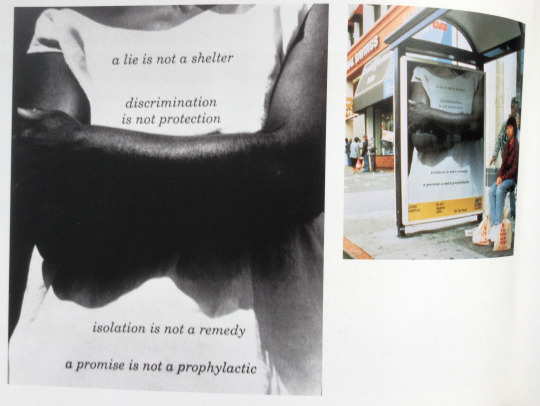
Lorna Simpson (b. 1960) is an American artist who works in a wide range of media, including photography, installation, sculpture, video, film, and drawing. She gained notoreity in the mid-1980s with works that confronted and challenged conventional views of gender, identity, culture, history, and memory. Simpson was the first African-American woman to exhibit at the Venice Biennale in 1990.
Simpson’s ongoing questioning of memory and representation through her work not only speaks for black female figures, but for all those who have been oppressed, marginalized, and silenced. Even after more than three decades, her shrewd observations and critiques about our culture resonate deeply at this moment.
Image 1: “Easy for Who to Say” 1989
Image 2: “Untitled (A lie is not a shelter)” 1989
Image 3: “Untitled (A lie is not a shelter)” For Art Against AIDS in San Francisco
You can download the teaching material from the Smithsonian American Art Museum’s website.
Lorna Simpson
Author / Creator: Jones, Kellie
London ; New York : Phaidon, c2002.
English
HOLLIS number: 990091560860203941
#BlackHistoryMonth#LornaSimpson#BlackArtists#BlackWomenArtists#HarvardFineArtsLibrary#Fineartslibrary#Harvard#HarvardLibrary
38 notes
·
View notes
Text
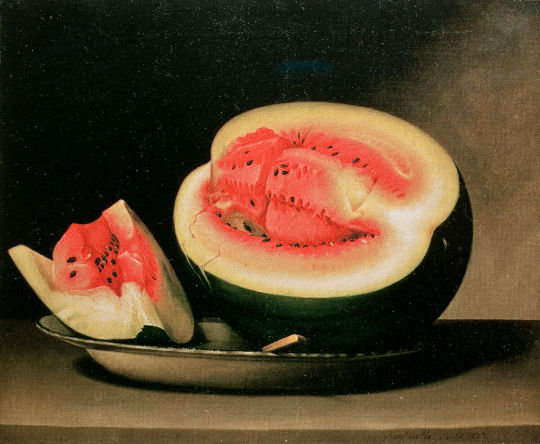
In honor of National Watermelon Day!
Interesting facts about the artist who painted this still life painting. Raphaelle Peale (1774 – 1825) was an American painter who had siblings named after prominent artists and scientists. Their names include Rembrandt, Rubens, Titian, Angelica Kauffmann, Linnaeus, and Franklin. Their father was an artist, Charles Willson Peale.
Raphaelle Peale is considered the first professional American painter of still life.
Still life with watermelon
Peale, Raphaelle, 1774-1825, American [artist]
Oil on canvas
1822
Repository: Museum of Fine Arts, Springfield, Massachusetts, United States
HOLLIS number: olvwork430753
This image is part of FAL’s Digital Images and Slides Collection (DISC), a collection of images digitized from secondary sources for use in teaching and learning. FAL does not own the original artworks represented in this collection, but you can find more information at HOLLIS Images.
#NationalWatermelonDay#StillLife#Painting#Watermelon#StillLifePainting#RaphaellePeale#HarvardFineArtsLibrary#FineArtsLibrary#Harvard#HarvardLibrary#DigitalImages
120 notes
·
View notes